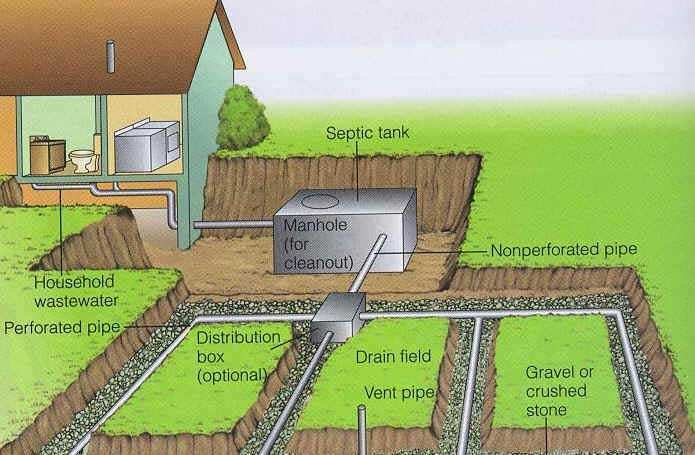Gregory Coles
Cleansing Services
Tel: 01823 284790

Septic Tank Emptying in Somerset and Devon
A septic tank is a key component of the septic system, a small-scale sewage treatment system common in areas with no connection to main sewage pipes provided by local governments or private corporations.
The term "septic" refers to the anaerobic bacterial environment that develops in the tank which decomposes or mineralizes the waste discharged into the tank. Septic tanks can be coupled with other onsite wastewater treatment units such as biofilters or aerobic systems involving artificial forced aeration.
Periodic preventive maintenance is required to remove the irreducible solids that settle and gradually fill the tank, reducing its efficiency. A properly maintained system, on the other hand, can last for decades or possibly even a lifetime.

Description
A septic tank generally consists of a tank (or sometimes more than one tank) of between 4000 and 7500 liters (1,000 and 2,000 gallons) in size connected to an inlet wastewater pipe at one end and a septic drain field at the other. In general, these pipe connections are made via a T pipe, which allows liquid entry and exit without disturbing any crust on the surface. Today, the design of the tank usually incorporates two chambers (each of which is equipped with a manhole cover), which are separated by means of a dividing wall that has openings located about midway between the floor and roof of the tank.
Potential problems
- Excessive dumping of cooking oils and grease can cause the inlet drains to block. Oils and grease are often difficult to degrade and can cause odor problems and difficulties with the periodic emptying.
- Flushing non-biodegradable items such as cigarette butts and hygiene products such as sanitary napkins, tampons, and cotton buds/swabs will rapidly fill or clog a septic tank; these materials should not be disposed of in this way.
- The use of garbage disposals for disposal of waste food can cause a rapid overload of the system and early failure.
- Certain chemicals may damage the components of a septic tank, especially pesticides, herbicides, materials with high concentrations of bleach or caustic soda (lye) or any other inorganic materials such as paints or solvents.
- Other chemicals can destroy septic bacteria itself, most notably silver nitrate even in very small quantities will kill an entire culture.
- Roots from trees and shrubbery growing above the tank or the drainfield may clog and/or rupture them.
- Playgrounds and storage buildings may cause damage to a tank and the drainage field. In addition, covering the drainage field with an impermeable surface, such as a driveway or parking area, will seriously affect its efficiency and possibly damage the tank and absorption system.
- The flushing of salted water into the septic system can lead to Sodium Binding in the drainfield. The clay and fine silt particles bind together and effectively water-proof the leach field, rendering it ineffective.
- Excessive water entering the system will overload it and cause it to fail. Checking for plumbing leaks and practicing water conservation will help the system's operation.
- Very high rainfall, rapid snow-melt, and flooding from rivers or the sea can all prevent a drain field from operating and can cause flow to back up and stop the normal operation of the tank. High winter water tables can also result in groundwater flowing back into the septic tank.
- Over time, biofilms develop on the pipes of the drainage field, which can lead to blockage. Such a failure can be referred to as "biomat failure".
- Septic tanks by themselves are ineffective at removing nitrogen compounds that have potential to cause algal blooms in receiving waters; this can be remedied by using a nitrogen-reducing technology, or by simply ensuring that the leach field is properly sited to prevent direct entry of effluent into bodies of water.
Click below for recent changes to the way septic tanks are registered with the envoronment agency:
http://www.environment-agency.gov.uk/homeandleisure/118753.aspx
We are experts at septic tank emptying in Somerset and Devon.
Call us for a no obligation quote on 01823 284790